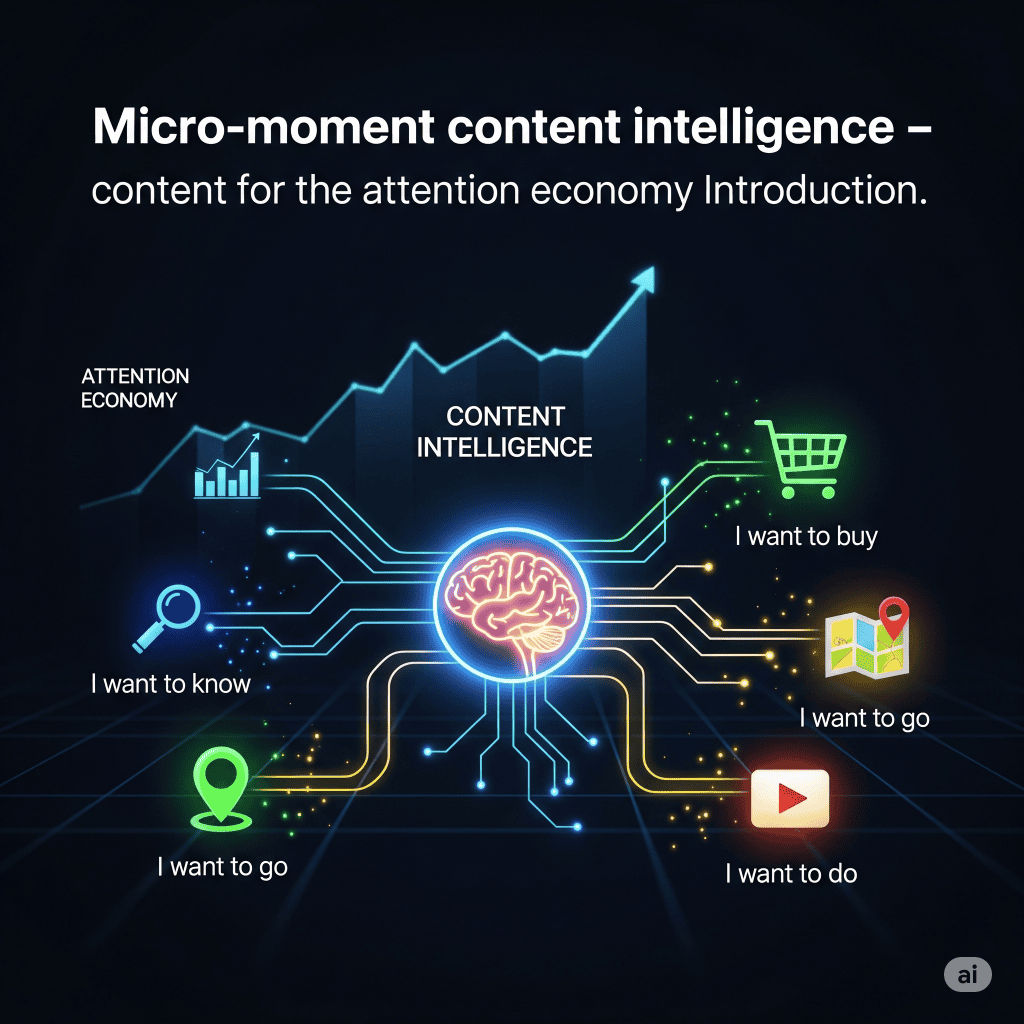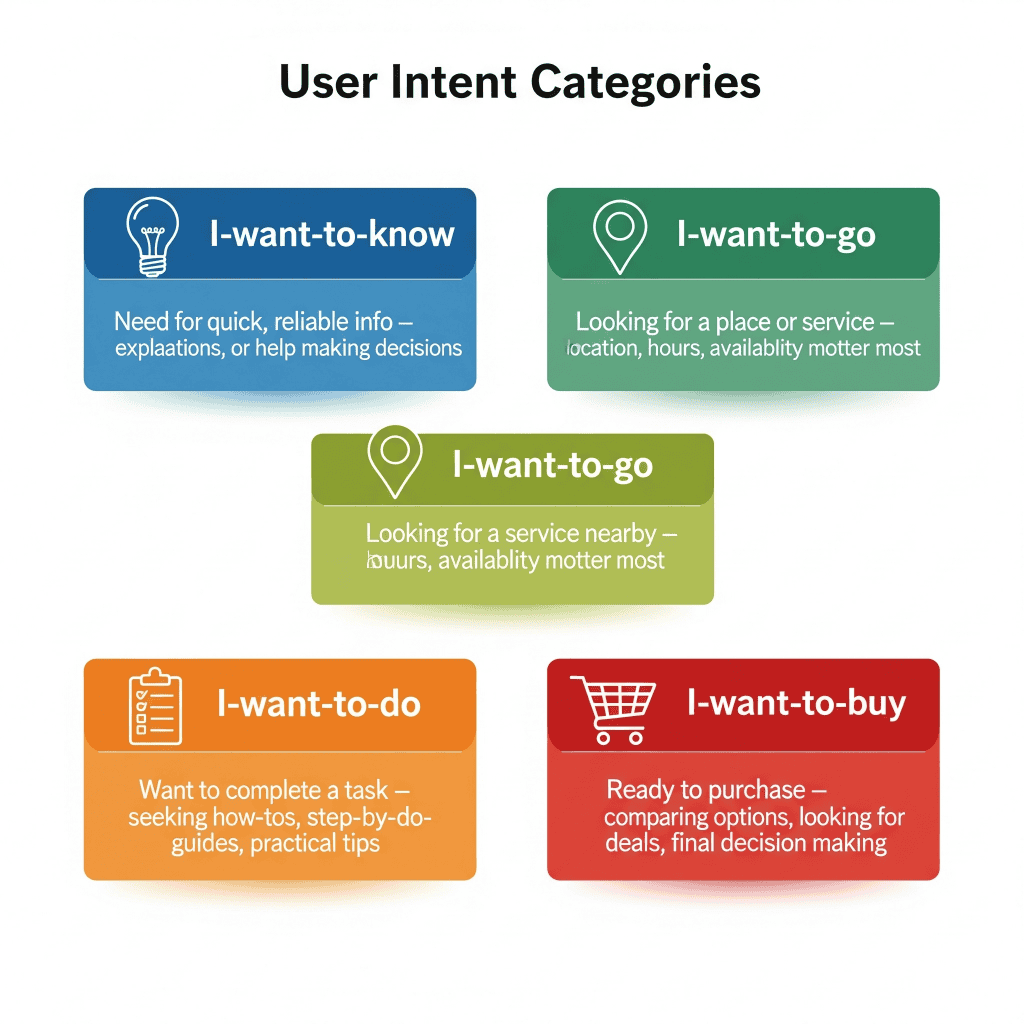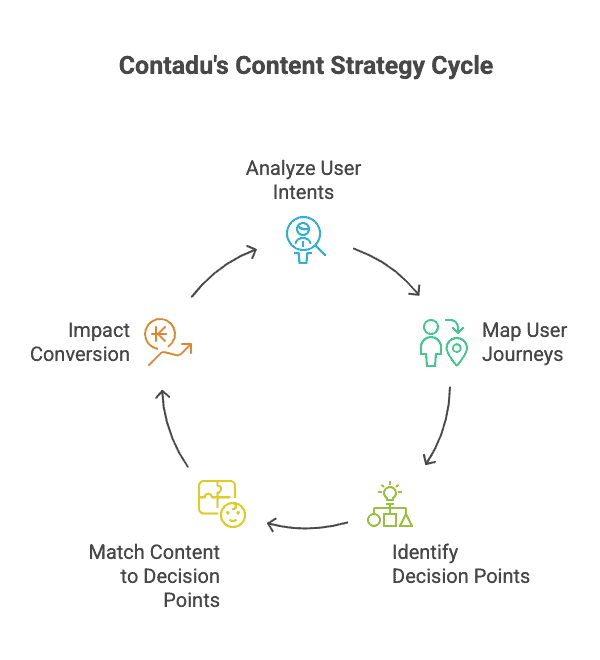Micro-moment content intelligence – content for the attention economy Introduction.

The contemporary digital world has fundamentally changed the way we consume information and make purchasing decisions. In the era of ubiquitous smartphones, social media, and instant access to information, attention has become the most valuable resource. Marketers and content creators face the reality where every swipe can mean losing a potential customer. This forces a revolutionary approach to content creation and delivery.
Traditional marketing models, based on long decision-making cycles and detailed product analyses, are becoming ineffective in the world of instant gratification. Today’s consumers expect immediate answers to their needs, whether they are looking for information, entertainment, or specific products. Micro-moment marketing and intelligent content strategies respond to these challenges by offering personalized, contextual content at the right moment and place
Attention Economy: The era of dispersed attention.
Microsoft’s 2015 research revealed an alarming trend: the average internet user’s attention span shrank to only 8 seconds, shorter than that of a goldfish. Since then, the situation has worsened, with further studies indicating a continued decline in attention capacity. Today’s internet user does not engage in linear reading of content—instead, they scan for key information, making lightning-fast decisions about whether to continue or abandon interaction.
Nielsen Norman Group conducted extensive behavioral research showing that most users leave a website within the first 10-20 seconds if they do not immediately find the information they seek. This phenomenon, known as the “bounce rate,” has become a key indicator of digital content effectiveness. Users have neither time nor patience for exploration—they expect relevant information to be delivered instantly.
The culture of instant gratification, driven by social media algorithms and mobile apps, has established new standards of expectation. Every delay, unnecessary click, or additional second waiting for content to load can mean losing the user. In this reality of the attention economy, content must be designed with full awareness of the limitations and value of human attention as the most precious digital resource.
What are micro-moments?
The concept of micro-moments was developed and popularized by Google’s Think with Google team as a response to changing consumer behaviors in the mobile environment. A micro-moment is far more than a short interaction with a device—it is a complex situation where the user has a specific, immediate need and expects rapid fulfillment.
Key characteristics of micro-moments include the intensity of user intent, where at that instant the user is fully focused on finding a specific answer or solution.
However, this concentration is very fragile and easily interrupted by distractions. The user acts impulsively, often driven by a sudden need or external stimulus, meaning their tolerance for delays is practically zero.
Mobile devices are the primary channel for fulfilling micro-moments, which introduces additional constraints related to screen size, usage context (often on the move or in distracting situations), and expectations for app and website speed.
Google has identified four fundamental types of micro-moments that cover the most common user intents.

The difference between a micro-moment and traditional purchase intent lies in the complexity of context. A micro-moment is not just a need but a holistic situation involving place, time, device, user mood, and immediate availability of alternatives. This full context determines whether the content succeeds in engagement, conversion, or building a relationship with the brand.
Micro-content strategy — a new logic of content creation.
The shift from long-form to micro-content.
In the world of micro-moments, the approach to creating and distributing content fundamentally changes. Traditional long-form content, such as extensive blogs, detailed product descriptions, or multi-page brochures, give way to formats designed for quick consumption and immediate value delivery.
📌 Snackable video, i.e., short films lasting from 5 to 15 seconds, has become a basic communication format on social media. These micro-productions must contain a complete message—from the hook, through the main information, to the call-to-action—in an extremely limited time. The success of such content depends on storytelling in a nutshell and the visual appeal of the first seconds.
📌 Contextual infographics differ from traditional infographics by being dynamically tailored to the user’s specific situation. They may include real-time data, local information, or personalized comparisons generated on the fly based on the user’s profile and behavior.
📌 Mini carousels on platforms like Instagram and LinkedIn allow presenting complex information in easily understandable formats. Each slide contains one key piece of information, and the entire series creates a cohesive narrative that users can consume at their own pace, without leaving the platform or navigating to external sites.
📌 Push content, including web push notifications, rich snippets in search results, or dynamic mobile app widgets, proactively delivers value before the user even seeks it. This content type requires particularly precise targeting and personalization to avoid being perceived as spam.
Core principles of micro-content strategy.
An effective micro-content strategy relies on three fundamental principles. Brevity and conciseness do not mean superficiality—every word and visual element must be carefully chosen to maximize informational value in minimal exposure time.
✔️ Context personalization goes beyond basic demographic data and involves understanding the user’s situation, current needs, communication preferences, and interaction history with the brand. Machine learning algorithms analyze behavior patterns to predict which type of content will be most effective at a given moment.
✔️ Mobility and instant usability require content optimized for different screen sizes, internet connection speeds, and usage contexts. The content must be equally effective whether viewed on a smartphone in the subway or on a tablet at home.
✔️ User experience and presentation form become as important as the content itself. It’s not only the information that matters but its delivery method, interface, interaction fluidity, and intuitive navigation. Modern content design combines copywriting with UX/UI design, creating holistic user experiences.
Content intelligence in micro decision moments.
Matching content to micro-moments requires much more than intuition and experience—it needs advanced data analysis systems and artificial intelligence that can process vast amounts of information in real-time and make immediate content personalization decisions.
🔸Content intelligence in practical use functions as a comprehensive system that monitors and analyzes user behavior in every microsecond of their interaction with a digital platform. The system tracks not only clicks and conversions but also subtle behavioral signals such as scrolling speed, gaze fixation points, intensity of interaction, and even cursor or touch movement patterns.
🔸Intent recognition with every click is a multi-layered process combining user session context analysis, long-term interaction history, demographic data, explicit preferences, and inferences drawn from similarity to other users with comparable profiles. Natural language processing algorithms analyze search queries, comments, and other text communication forms to understand not just what users say but what they truly mean.
🔸Dynamic selection of content format, communication language, and call-to-action according to context occurs through advanced real-time A/B testing systems. Different content variants are tested simultaneously on user segments with similar characteristics, and machine learning algorithms learn which element combinations are most effective in specific situations.
🔸Behavioral signals form the basis for AI-driven content optimization. Dwell time is analyzed in the context of content type and length to determine whether the user truly engaged with the content or just scanned it. Scroll depth indicates which content parts are most engaging and which cause interest to drop. Location data allows content adjustment to local trends, weather, events, or cultural differences.
🔸Device type and technical parameters, such as screen size, connection speed, or operating system, influence content format and complexity optimization. Algorithms automatically adjust image resolution, text length, or the number of animations to ensure optimal performance on each device.

🔸 Persado specializes in optimizing communication language by analyzing the emotional impact of different words, phrases, and communication styles on specific audience groups. Algorithms test thousands of linguistic variants to find the most persuasive messaging forms.
🔸Pathmatics provides competitive analysis of advertising campaigns and content strategies, allowing brands to understand which approaches work well for competitors and identify under- saturated market niches.
Attention span marketing – matching user attention length.
Attention span marketing represents a strategic approach to content creation that considers users’ natural variability in concentration abilities at different journey stages. Instead of treating attention as a constant value, marketers learn to adapt the intensity and complexity of messages to the current engagement level of the audience.
At the top of the sales funnel, when users are just discovering the brand or product category, their attention span is shortest and most prone to distractions. Here, effective are 3–5 second videos that must instantly attract attention through surprising visuals, provocative questions, or strong emotional hooks. Calls-to-action must be simple and require low engagement, for example, “learn more” or “see offer.”
In the middle funnel, users show greater readiness for deeper engagement because they’ve identified their need and are considering options. Micro-guides delivering valuable knowledge in condensed form, carousels presenting various product aspects, or short demos showing specific benefits work well here. Content can be slightly longer and more detailed but still must maintain fast pace and visual appeal.
At the bottom of the funnel, users are closest to the purchase decision and willing to devote more attention to detailed analysis. Effective are short FAQs addressing specific concerns, limited-time offers, customer testimonials, or detailed product comparisons. Even though users are more engaged, content must remain precise and action-oriented.
Facebook, based on analysis of billions of video interactions, established a standard that the first 3 seconds of material must contain the main message and recognizable branding elements. Statistics show that after 7 seconds, most users scroll on, meaning key information must be delivered in an extremely short time.
Combining creativity with data-driven insights has become key to success in attention span marketing. Content that blends strong emotional impact with precise answers to specific user questions generates the highest click-through rates and engagement levels. Algorithms analyze which combinations of emotional and informational elements are most effective for different audience segments.
Practical application: Micro-moment marketing in e-commerce and social media.
Companies that have effectively implemented micro-moment marketing strategies observe significant improvements in key business metrics, from conversion rates to customer lifetime value and brand loyalty. Market leader case studies show how practical implementations of these concepts translate into real business outcomes.
Nike uses advanced geolocation and data analytics systems to create dynamic push content tailored not only to the user’s location but also to current weather conditions, local sports events, or fitness trends in the region. When the weather is perfect for running in Chicago, city residents receive personalized notifications with motivational content, links to local running groups, or product recommendations adapted to the local climate. The system also analyzes users’ individual activity histories to adjust the intensity and type of motivation.
Spotify revolutionized music consumption by creating micro-playlists generated in real-time based on complex algorithms analyzing listening history, time of day, day of the week, location, weather, social media activity, and other contextual signals. “Discover Weekly” and “Daily Mix” playlists not only respond to current musical preferences but also try to predict what music will suit the user’s specific life moment.
IKEA transformed its social media presence into a dynamic shopping inspiration platform that tailors content to local holidays, seasonal trends, cultural events, and even local weather patterns. Algorithms analyze which interior design styles are popular in specific regions, which colors dominate local fashion trends, and which furniture features are most sought-after during certain times of the year. Based on this, personalized campaigns reach users when they are most receptive to interior design inspiration.
Generative artificial intelligence and content creation process automation enable these companies to produce hundreds or even thousands of message variants without losing quality or brand consistency. AI systems analyze which content elements (headlines, images, call-to-actions, color schemes) perform best for different user segments and automatically generate new combinations that are then tested in controlled environments before wider deployment.
Modern marketing evolves toward a “relevance-first” approach, where the quantity of interactions matters less than their quality and fit to the user’s current needs. Success metrics shift from simple engagement indicators (likes, shares, comments) to more sophisticated measures such as quality time spent, intent-to-purchase indicators, or long-term brand affinity scores.
Summary.
The attention economy presents marketing with challenges that require a fundamental shift in content creation and distribution approaches. In a world where the average user is exposed to thousands of messages daily and their attention span decreases year by year, traditional marketing communication methods are no longer effective.
Contemporary consumers do not have the time or patience for long decision-making processes or detailed product analyses. They expect immediate answers, personalized recommendations, and seamless user experiences that do not demand additional cognitive effort. In this reality, success comes to those marketers who can deliver maximum value in minimal time, using advanced technologies for precise targeting and personalization.
Strategies based on micro-moment content intelligence are no longer an optional innovation but a fundamental requirement for companies aiming to remain competitive in the digital ecosystem. Micro-content strategy, supported by real-time analytics, machine learning algorithms, and automated content generation, enables winning the battle for attention even in scenarios where only a few seconds are available to make an impression.
In an economy where every second of attention span has measurable value, the ability to hit the user’s micro-moment with precisely targeted content represents the highest possible return on investment. Companies that master this skill will define the future of customer engagement, while those sticking to traditional methods will systematically lose market share to more agile competitors.
The future of digital marketing belongs to those who understand that in the attention economy it is not about competing for mindshare but delivering value in moments that matter. Micro-moment marketing intelligence is not only a campaign optimization tool but a strategic capability determining long-term brand sustainability in an increasingly fragmented and competitive digital landscape.

